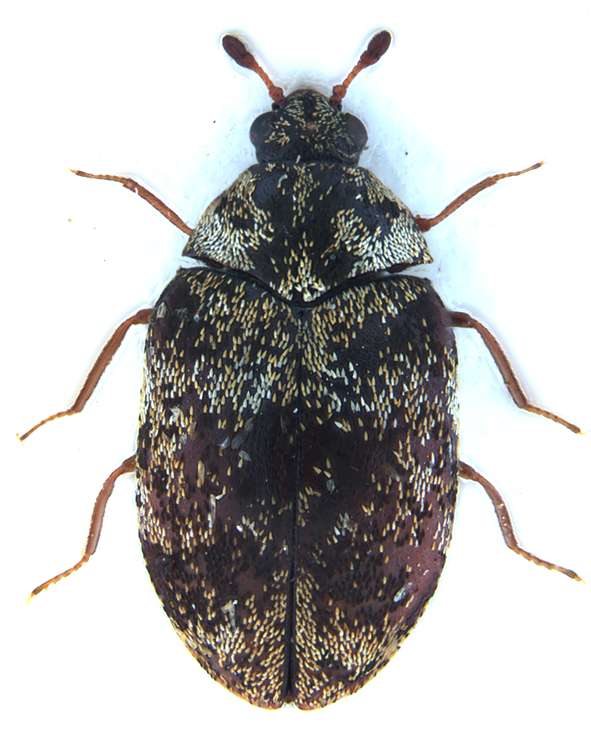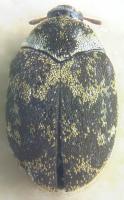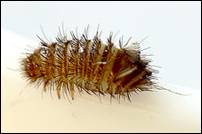Adult
Size
2 to 4 mm long
Aspect
Round-shaped, head clearly visible, rather short pronotum
Eight-articled antennae, the last 2 articles form a club
Triangular-shaped thorax when seen from above.
Rather short legs that can fold back into their grooves on the ventral surface.
Colour
Almost black head.
Dark to black top with golden or whitish spots or stripes, more or less regularly distributed on thorax and elytra.
Ventral surface of a uniform light-grey colour.


 Anthrène des musées
Anthrène des musées  Museum beetle, Carpet beetle
Museum beetle, Carpet beetle  Gorgojo de museos
Gorgojo de museos  Kabinettkäfer, Museumskäfer
Kabinettkäfer, Museumskäfer 



